A Bar Line graph is commonly used in many domains. The SGPLOT procedure makes it easy to create bar line graphs where the user can customize it in many different ways. This post is prompted by a recent question on the communities page on creating such a graph, with one bar and
English
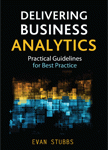
Writing, editing, galley proofs, indexing, cover design…it all takes time. The logistics of getting a book published can be tough when you’re sitting across the room from each other. What happens when you’re across the world from each other? That’s the topic of this month’s blog post. Technology makes the

Most of us can probably recite the age-old recommendation to "drink eight 8-ounce cups of water every day" in our sleep. However, how many of us actually do it? We are often quick to replace our water bottles with sugar-sweetened beverages, coffee, or tea while telling ourselves, "it’s mostly water,

Everyone may find bad dates in their data set from time to time, but it’s often difficult to tell if they’re mere annoyances or indicative of a larger problem. Luckily, Lucheng Shao has come to the rescue in his SAS Global Forum winning paper, Don’t Let a Bad Date Ruin

A regular reader noticed my post on initializing vectors by using repetition factors and asked whether that technique would be useful to expand data that are given in value-frequency pairs. The short answer is "no." Repetition factors are useful for defining (static) matrix literals. However, if you want to expand

Imagine a business offering a multitude of products and services that seemingly have little relationship to one another, and all are supported by different data systems. This is the plight of local governments. The products and services produced and managed by local governments range from utilities, solid waste and recycling to parks

This week's SAS tip is from Art Carpenter and his latest book Carpenter's Guide to Innovative SAS Techniques. Art is a talented SAS user and prolific author--and was just recognized in the SAS Circle of Excellence for 30 years of using SAS software. After taking a look at this week's book

Big data. It’s still the hottest topic going – and making it pay off continues to be a challenge. According to a recent IDG Research survey, organizations’ biggest big data headaches are: 1) lack of skills needed to run analysis and 2) difficulty in making data available to users for

Like most SAS users and administrators, you usually don't know where your backend SAS servers are located--probably in some basement server farm or perhaps another building or even another town. But I'm sure you do know that your SAS client application must have a way to reach services running on

If you've watched any of the demos for SAS Visual Analytics (or even tried it yourself!), you have probably seen this nifty exploration of multiple measures. It's a way to look at how multiple measures are correlated with one another, using a diagonal heat map chart. The "stronger" the color
The MidWest SAS Users Group (MWSUG) 2013 call for papers closes on June 15. If you’ve submitted a paper or have been thinking about it, why not sign up for the MWSUG Presenter Mentoring Program? Students, first-time paper or poster presenters or anyone who wants guidance with abstract submission, paper
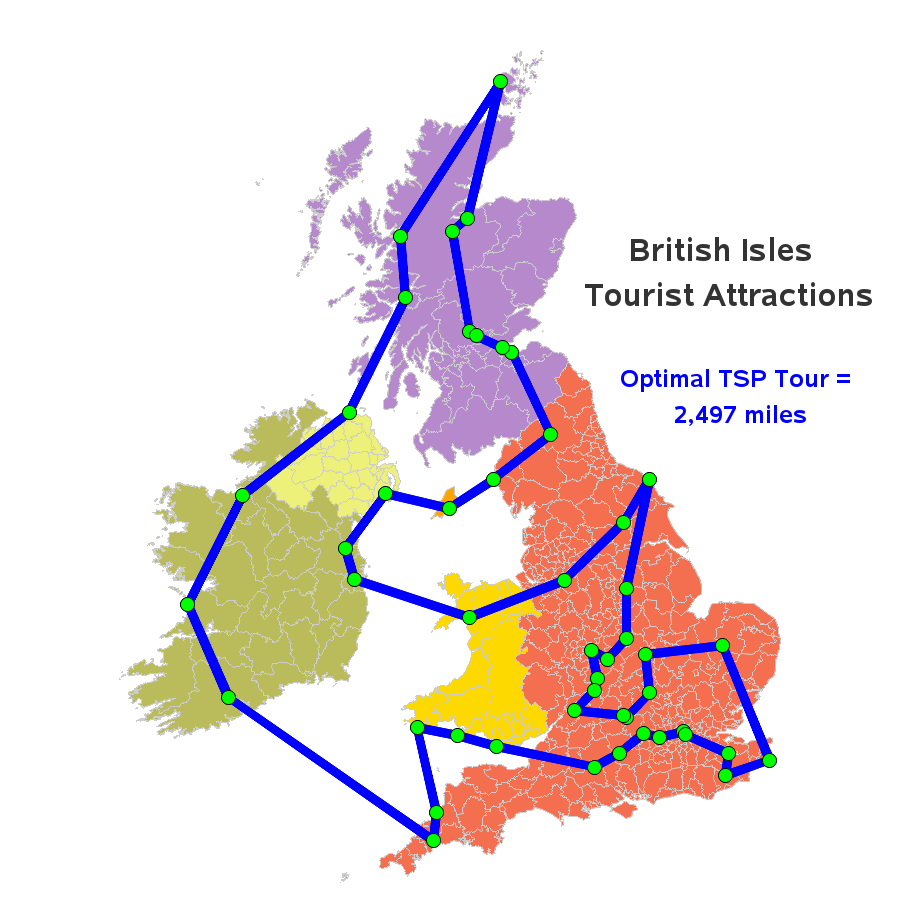
You might have seen my previous blog, where I plotted some interesting tourist attractions on a geographical map of the British Isles (which may be of interest to Analytics 2013 Conference delegates)... Well this blog uses even more powerful analytics, and shows how SAS can calculate the "optimal tour" to visit all
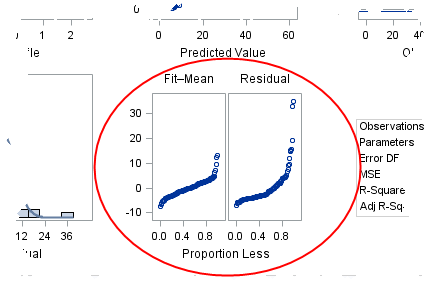
In a previous blog post, I described how to use a spread plot to compare the distributions of several variables. Each spread plot is a graph of centered data values plotted against the estimated cumulative probability. Thus, spread plots are similar to a (rotated) plot of the empirical cumulative distribution

Do we ever really get pricing right? Sometimes we do, and some of those times are actually on purpose, but it takes a lot of upstream activities to go right in order for pricing to be optimal as well. Too often pricing is that last variable at our disposal when

In Amsterdam, harnessing the power of the (data) tide With more than 100 km of canals and 1,500 bridges, dikes and dams, Amsterdam has long been in tune with the tides. Today, as an economic tide tugs at Europe and many regions, organizations are coping with a flood of data

First of all, congratulations to everyone who presented at SAS Global Forum 2013. Your hard work and contributions are what make it a success each year. Even though SAS Global Forum 2013 has come and gone, all of the papers and presentations are still available online. Out of this fantastic

Suppose that you have several data distributions that you want to compare. Questions you might ask include "Which variable has the largest spread?" and "Which variables exhibit skewness?" More generally, you might be interested in visualizing how the distribution of one variable differs from the distribution of other variables. The
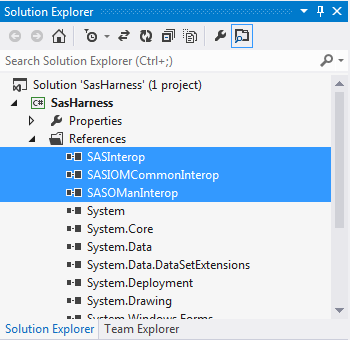
As part of my follow-up to SAS Global Forum 2013, I've posted a few articles about how to create your own client apps with SAS Integration Technologies. This article shows how to use Microsoft .NET -- the same approach used for SAS Enterprise Guide and SAS Add-In for Microsoft Office

This week's SAS tip is from Michele Burlew and her book SAS Macro Programming Made Easy, Second Edition. Michele is the author of several extremely helpful SAS books. Visit her author page to learn more about her work and for additional free content. The following excerpt is from SAS Press

Are you going to Analytics 2013 in London?!? And if so, have you found any fun/interesting/touristy things to do while you're there? ... Being an analytics conference, I thought it would be good to apply some "analytics" to the task! So I took some locations in the British Isles that I thought

John Heaton is no stranger to the often frustrating process of migrating code between environments after software updates. While release management and version control may often be afterthoughts, Heaton cautions that ignoring them could be “time consuming and disastrous should errors occur.” His winning SAS Global Forum paper SAS® Release

At a time when information is proliferating at an unprecedented rate, companies that can effectively gather, create and use information can gain dramatic market advantages over those that don’t. SMB Group’s 2012 Routes to Market Study shows that SMBs that have deployed business intelligence and analytics solutions are 51% more

Last week I showed how to use simulation to estimate the power of a statistical test. I used the two-sample t test to illustrate the technique. In my example, the difference between the means of two groups was 1.2, and the simulation estimated a probability of 0.72 that the t

One of the great things about SAS libraries is that you can write your programs to read and write data without having to worry about where the data lives. SAS data set on a file system? Oracle table in a database server? Hadoop data in Hive? For many SAS applications,

A SAS user told me that he computed a vector of values in the SAS/IML language and wanted to use those values on a statement in a SAS procedure. The particular application involved wanting to use the values on the ESTIMATE and CONTRAST statements in a SAS regression procedure, but

They say "Imitation is the most sincere form of flattery"... Therefore when I imitate Hans Rosling's famous world-data animation, it's not that I'm jealous, but that I'm paying homage to him! (OK, and maybe also a little bit jealous! LOL) Well, anyway, for those of you who haven't seen it,

Reading Jan Bigalke’s SAS Global Forum paper on “Hardening a SAS® Installation on a multi tier installation on Linux" reminded me of baking apple stack cake with my mother. Neither is a simple project. Both are time-consuming, and their success depends on how skillfully you handle each layer. Data security

The power of a statistical test measures the test's ability to detect a specific alternate hypothesis. For example, educational researchers might want to compare the mean scores of boys and girls on a standardized test. They plan to use the well-known two-sample t test. The null hypothesis is that the

As a marketer interested in analyzing my campaign data visually, I recently had a chance to slow down and read this TDWI checklist report entitled “Seven Steps to Deploying Visual Analytic for Improving Actionable Insight” by Dave Stodder, Director of TDWI Research for Business Intelligence. What it helped me understand is
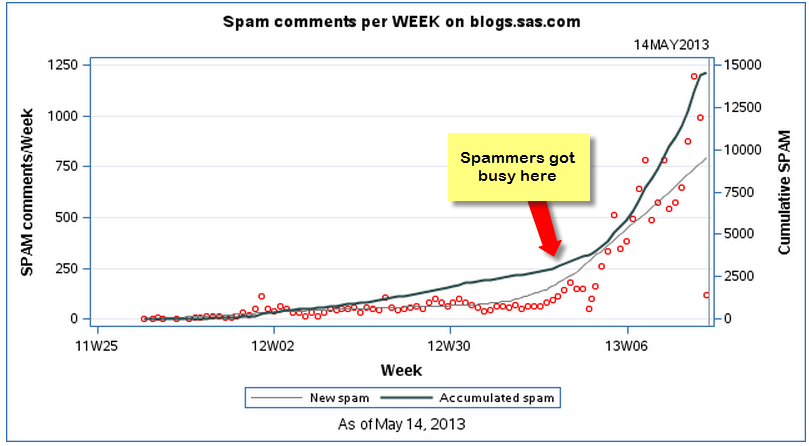
If you write a blog, you deal with spam comments. That's just part of the deal. Spammers are forever inventing new and creative methods for "tricking" you into accepting their spam comments. These comments have nothing to do with your blog topic but do contain trackback links to their own
















